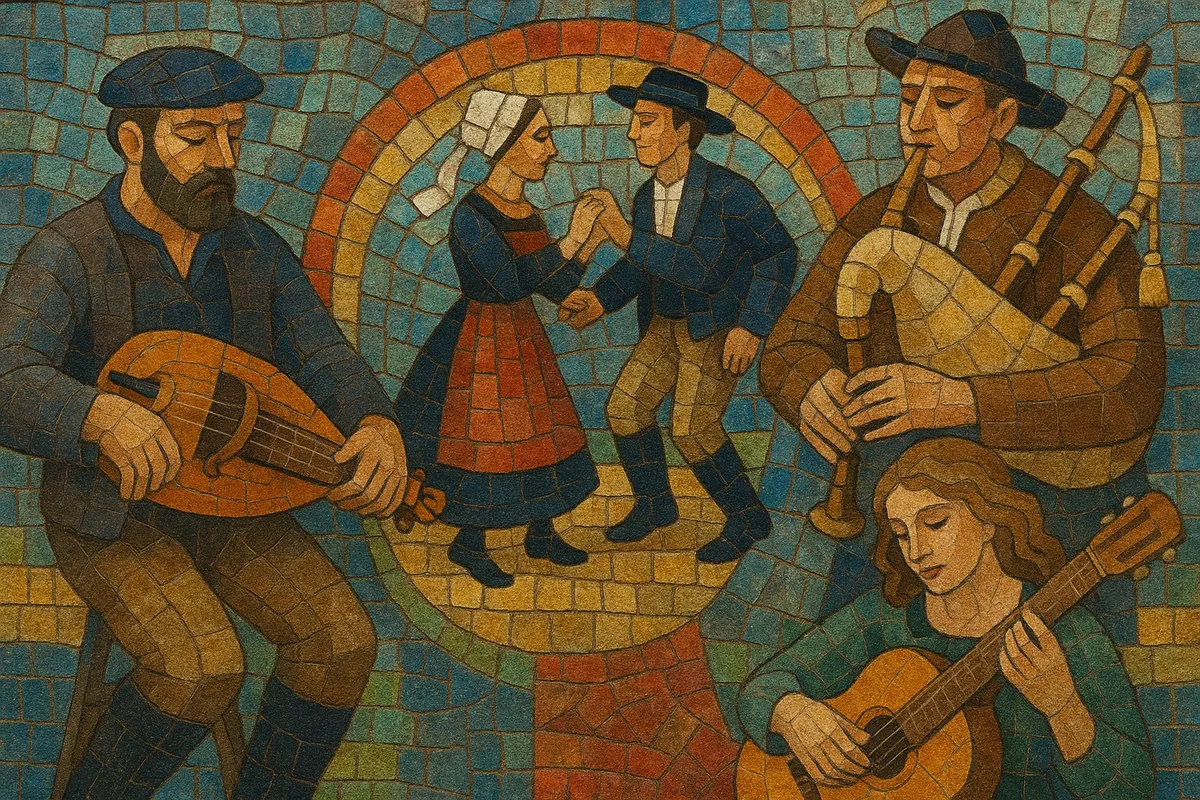French folk music encompasses the traditional song and dance practices of the many regions of France, from Brittany and Normandy in the west to Occitania and Provence in the south, Alsace and Lorraine in the east, and Burgundy, Auvergne, Poitou, and beyond.
It features distinctive regional languages (Breton, Occitan, Corsican, Basque, Alsatian dialects, and French itself), characteristic vocal styles such as the Breton call-and-response kan ha diskan and Corsican multipart paghjella, and a rich dance repertoire (bourrée, gavotte, an dro, hanter-dro, branle, scottish, mazurka, polka, and valse).
Core instruments include the diatonic button accordion, hurdy-gurdy (vielle à roue), French bagpipes (cabrette, cornemuse, biniou), bombarde, fiddle, clarinet, tambourin à cordes, and modern additions like guitar and bouzouki. Social dance events (bal folk, fest-noz in Brittany) keep the tradition alive, while revival artists and ensembles bridge archival repertoire with contemporary arrangements.
France’s folk traditions are deeply rooted in medieval and early modern rural life, where dance tunes, narrative ballads, work songs, and ritual pieces were transmitted orally. Each region cultivated distinct idioms: Brittany’s Celtic-linked music (fest-noz dances, kan ha diskan), central France’s bourrées and hurdy-gurdy repertoire, Occitania’s Occitan-language song and dance, Corsica’s polyphony, Gascony’s wind-led dance bands, and Basque and Alsatian traditions with their own timbres and rhythms.
From the 19th century onward, folklorists and composers began to notate and publish traditional repertoires. Field collectors and regional scholars documented melodies, texts, and dance structures, while composers such as Joseph Canteloube popularized regional songs (e.g., Chants d’Auvergne) in art-music settings. Urban bal-musette scenes absorbed rural dance forms (valse, polka, scottish, mazurka) via accordion and cabrette, linking folk and popular urban dance culture.
Inspired by European and Anglo-American revivals, French musicians undertook systematic "collectage" (field recording and repertory gathering). Festivals, folk clubs, and labels fostered a new audience for traditional music as living dance culture. In Brittany, the fest-noz was revitalized (later inscribed by UNESCO in 2012). Seminal artists and groups—Alan Stivell, Tri Yann, Malicorne, La Bamboche, La Chavannée—reimagined regional repertoires with modern arrangements, new harmonies, and expanded instrumentation.
From the 1980s onward, French folk continued to evolve: bagadoù (Breton pipe bands) grew in sophistication; singer-songwriters blended chanson with folk narratives; and dance bands powered a nationwide bal folk movement. Contemporary artists fuse folk with rock, jazz, and electronics, while archives, community ensembles, and festivals (e.g., Festival Interceltique de Lorient, Festival de Cornouaille) sustain transmission. Today, French folk thrives as both participatory dance music and a creative platform for regional languages and identities.


